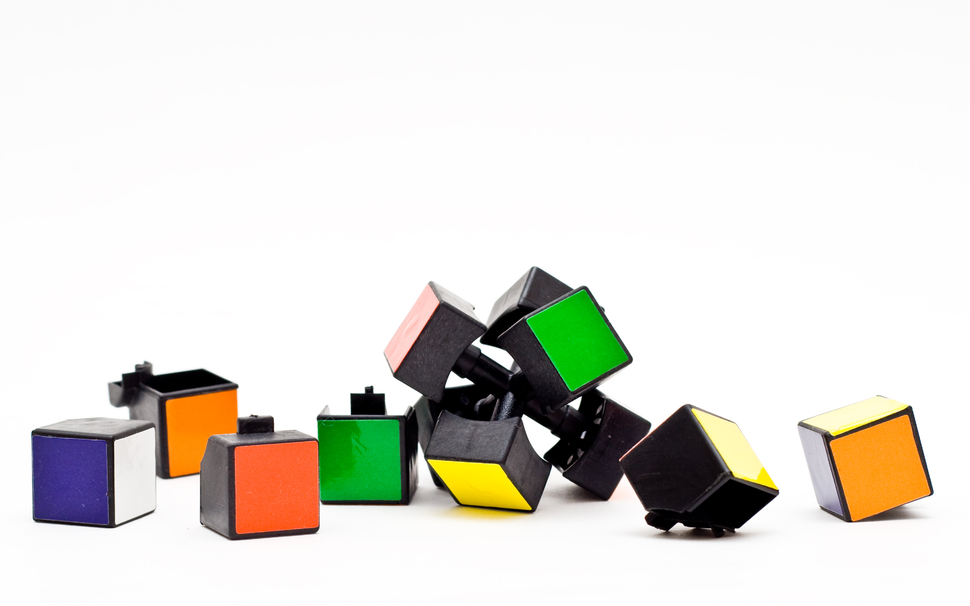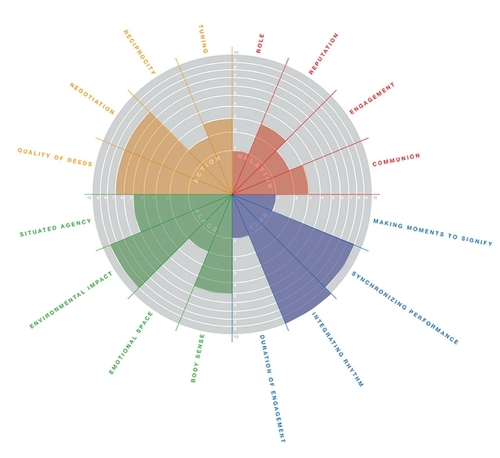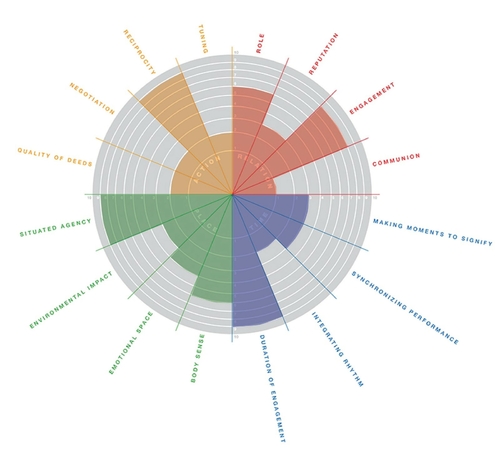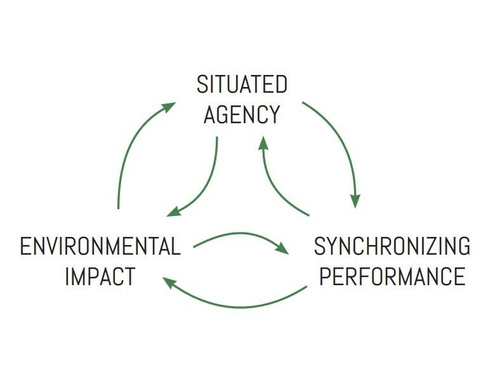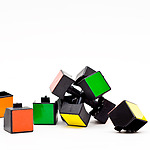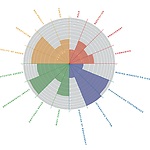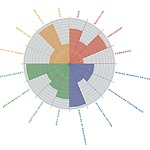Patrizio Cuscito's image (2008). Licensed under Creative Commons 2.0
In this section we apply the YUTPA framework to the citizens of Texel and to innovators on Texel. Caroline Nevejan presents the concept ‘Presence’, which we defined in the above section. She argues that design for presence goes along with design for trust, which are both about making trade-offs. Trade-offs between ‘you’ and ‘not you’, between ‘now’ and ‘not now’ and between ‘here’ and ‘not here’.
The YUTPA framework contains factors for measuring these trade-offs for presence and trust in individual human experience. Hereby, YUTPA stands for “to be with You in Unity of Time, Place and Action”. To assess trust, the framework asks for scores on each of the following 16 aspects: role, reputation, engagement, communion, making moments to signify, synchronizing performance, integrating rhythm, duration of engagement, body sense, emotional space, environmental impact, situated agency, quality of deeds, negotiation, reciprocity and tuning. These are clustered by four in the dimensions relation, time, place and action, respectively.
We explain how we expect Texelaars and Texel innovators to experience presence in the current situation by filling in the framework according to our current knowledge. In the intensive week on Texel we can check these assumptions. We make sure to apply the framework to the topic of innovation, not on the behaviour of the actor in general.
YUTPA framework for Texelaars
The result of the YUTPA framework for Texelaars can be found in the Figure 1 below.
Figure 1. YUPTA Framework for Texelaars
For Texelaars, the topic of innovation is not very lively as we heard in the interview with Anton. They don’t feel they have a role, a reputation nor do they feel engaged or part of an innovation communion. Therefore, all factors in the dimension relation score below 5.
In the dimension of time, Texelaars currently have no innovation-related moments to signify, nor do they feel any duration of engagement. No information is available on celebrations or reflection moments regarding innovation. These factors are therefore scored 1. However, synchronizing rhythm scores 9, because citizens feel strongly influenced by the sustainable innovation from their neighbors. When neighbors start separating their waste or driving an electric vehicle, we expect citizens to be influenced by that, through social control mechanisms. Also, integrating rhythm scores very high (10), because it is generally known that rhythm is personal lives are very strong. As soon as citizens are used to turning the tap off while brushing their teeth, they usually continue this behaviour for the rest of their lives.
Emotional space scores low, because due to low engagement in innovation, we expect citizens not to be emotionally attached to sustainable innovation. This was implicitly confirmed by Anton. Body sense scores 5, reflecting the generally known fact that it is beneficial for your health to have a sustainable living environment. Score 5 illustrates for situated agency that citizens feel they can have an impact on their environment to a limited extent. This is based on our information that some Texelaars perform sustainable initiatives, but that the amount of engagement is low. Finally, it is generally known that most citizens need strong incentives before engaging in sustainable innovation. Hence, the social environment can strongly affect their motivation, giving environmental impact a very high score.
Finally, the action dimension scores varying as well. When done on purpose, actions of a citizen can have a large effect, for example by setting up a successful local initiative. This makes the score for quality of deeds high (7), as well as negotiation. This means that citizens want to be rewarded for their actions, instead of giving without wanting something back (reciprocity scores 2). Tuning is low, because citizens don’t adapt their habits easily. All of these scores are based on our general knowledge of peoples daily behaviour.
YUTPA framework for Texel innovators
We did the same process for the sustianable innovators on Texel. The Figure 2 shows the analysis regarding the Texel innovators.
Figure 2. YUPTA Framework for Texel innovators
Contrary to citizens, Texel innovators have actively taken a role (score 6) and strongly engaged (score 8) to the topic of innovation. The reason for having low reputation (score 3) and low feeling of communion (score 1) is that some innovators work alone. Others who cooperate, experience many boundaries in institutions and resources, making the innovation process harder. We know this from the interview with Antoine Maartens.
The same reasoning applies to the dimension time. Synchronizing performance scores low due to little connection to other people. After the interview with Antoine we would have increase this score a little. This does not stimulate the creation of moments to signify (score 3). However, innovators are seen as highly dedicated by Antoine Maartens and therefore have very high duration of engagement (score 9). A characteristic of innovative processes is that they are unpredictable, so no integrated rhythm can be created (score 2).
We expect the innovator to feel like he can make a change (situated agency scores 9!), because if he would not feel like this he would not put so much effort in the innovation. He is not much inspired by his environment, because he works from intrinsic motivation instead of on exteral motivation (environmental impact 2). His emotional space and body sense are 4 and 6, because his emotional space varies between very large (inspiration) and very small (practical limitations); the unpredictable process of innovation with hurdles and happy moments.
In general, innovations cost much time and effort before delivering any results. Hence, quality of deeds scores 2. Regarding negotiation and reciprocity, the innovator is expected to strongly apply reciprocity (score 9), because he is probably working on his initiative from an idealistic drive. Negotiation scores only 2. Tuning scores 2, because due to intrinsice motivation the innovator wants to follow his own path, not willing to adapt easily to other plans.
Conclusion
To determine the space for improvement, we follow two criteria. First, factors which score below 5 for either citizens of innovators, are difficult to design for. Since trust is currently very low, it takes much effort to make even the slightest change. Second, when citizens score very different from innovators on a certain factor, this factor is suitable to design for, because there is a gap to be closed.
For our specific case, this means the following. The only factor respecting both criteria is situated agency; scoring 5 for citizens and 9 for innovators. This has therefore become our main focus for improving trust between citizens and innovators within the innovation sub-system.
Additionally, the factors synchronizing performance and environmental impact have scores differing of seven points. Even though their lowest score is 3 (so they do not meet the first criteria), we do think this factors can contribute in our design for presence and trust.
More concisely, we think that the three mentioned factors connect to each other nicely (Figure 3). Improved synchronizing performance can create a culture in which people think alike about sustainability. This creates an environment in which innovation is stimulated (environmental impact grows). This again supports closing the gap between ‘willing to change’ and ‘able to change’; situated agency, which can be enhanced by other measures as well.
After designing a future innovation sub-system, the three above factors can serve as a measure for the achieved change within the system.
